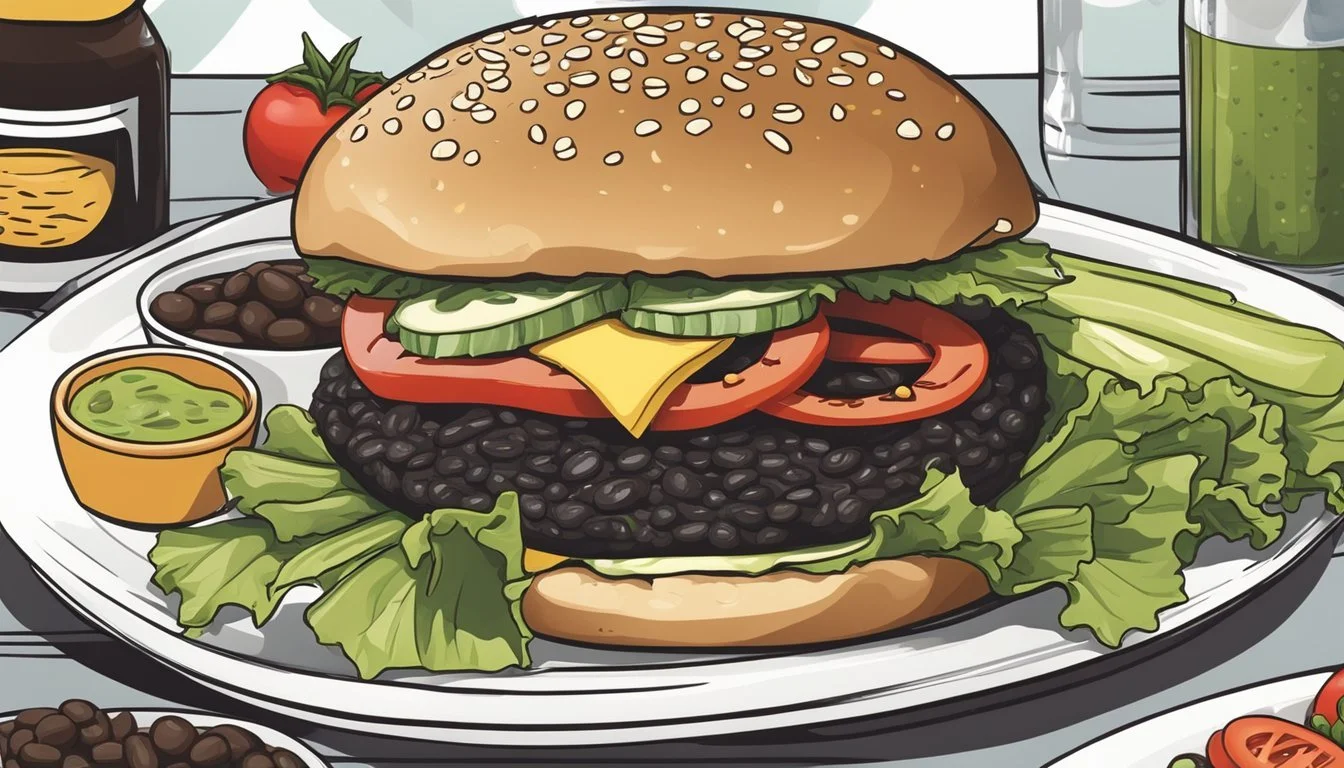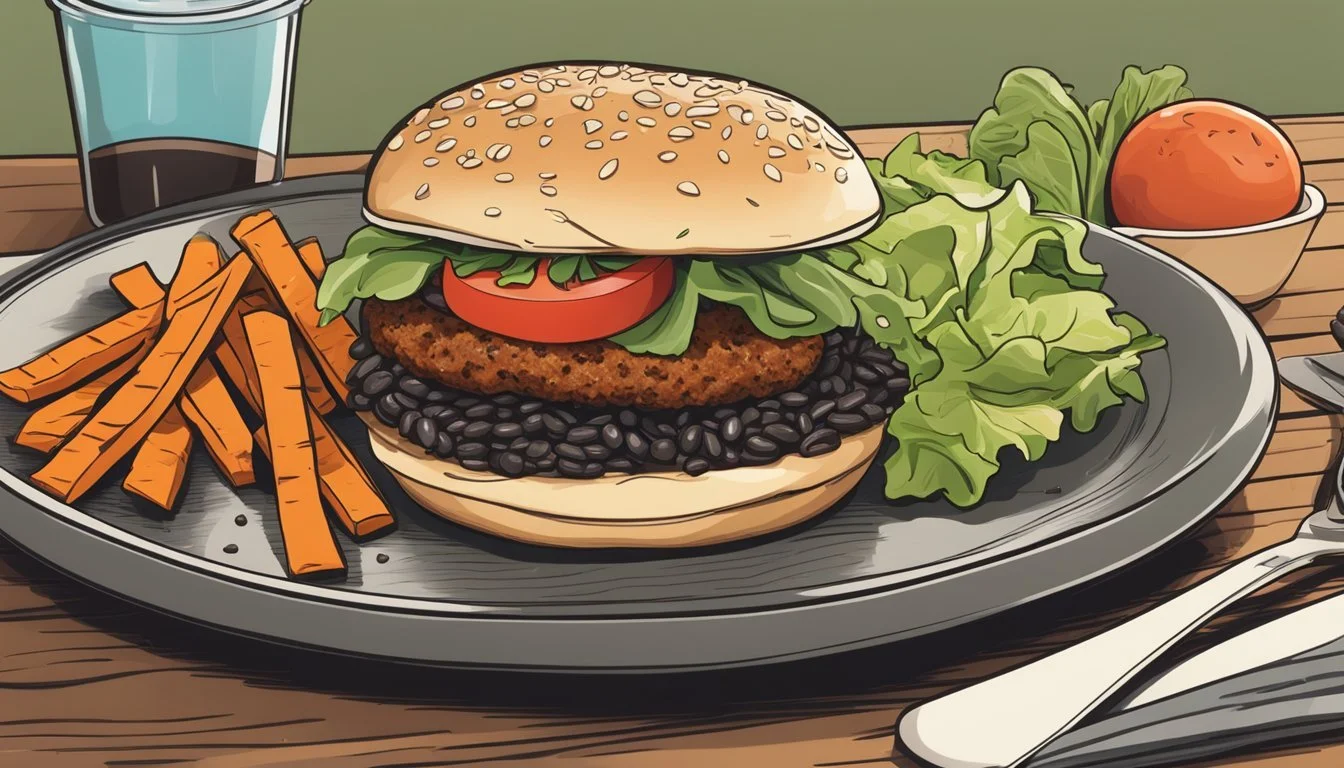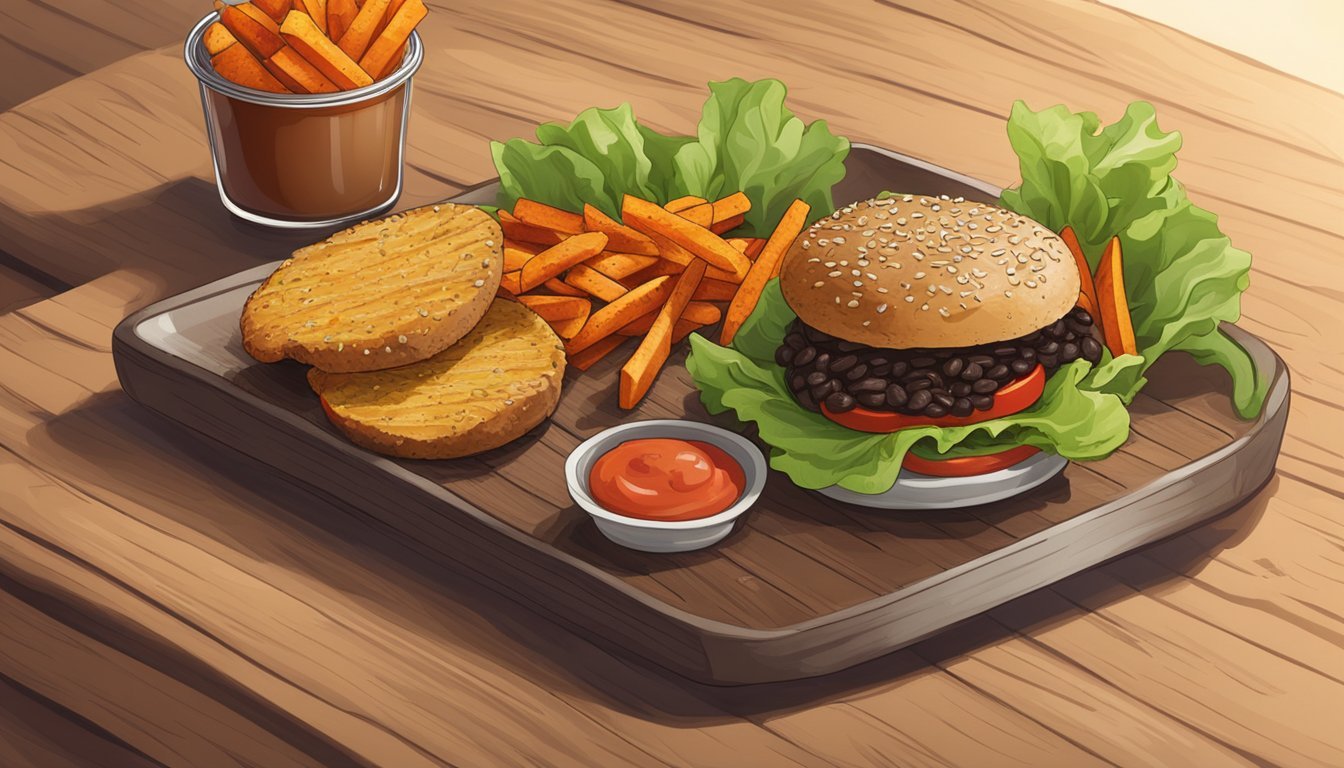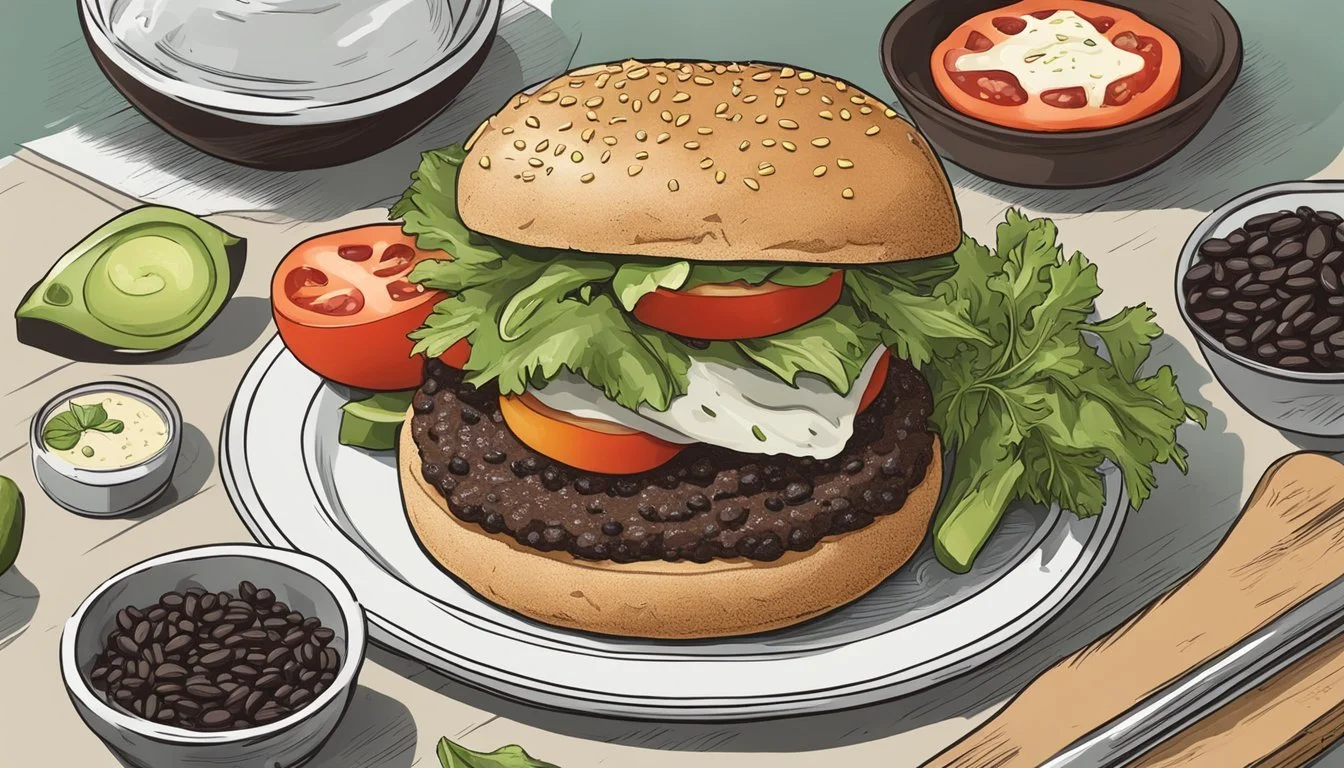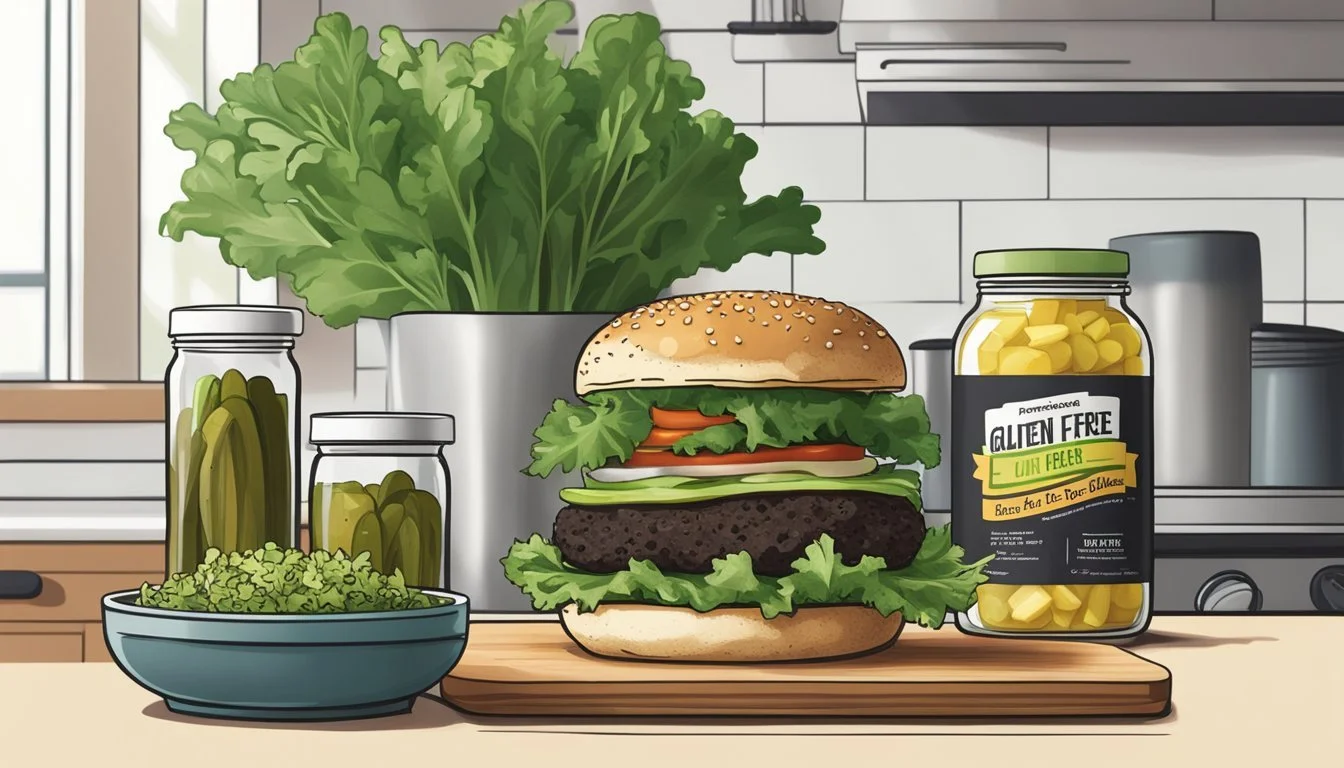How Long Do Gluten-Free Black Bean Burgers Last?
Storage and Shelf Life Guide
Gluten-free black bean burgers are a healthy and delicious option for those following a vegan or plant-based diet. Packed with protein and fiber, they offer a nutritious alternative to traditional meat-based patties. The ingredients typically include black beans, onions, green peppers, garlic, and various spices.
When considering the shelf life, it’s essential to know how long these patties can be safely stored. Cooked gluten-free black bean burgers can last up to four days in the refrigerator when stored in an airtight container. For longer storage, freezing is a viable option. They can be frozen for up to three months, maintaining their flavor and texture when reheated.
Whether enjoyed fresh out of the skillet or thawed from the freezer, gluten-free black bean burgers offer a versatile meal option. Their combination of healthy plant-based ingredients makes them a smart choice for anyone looking to incorporate more vegan and gluten-free meals into their diet.
Understanding Gluten-Free Black Bean Burgers
Gluten-free black bean burgers are a popular choice for those looking to maintain a gluten-free lifestyle while still enjoying a nutritious and flavorful meal. These burgers are typically packed with plant-based protein and fiber, making them an excellent option for both vegetarians and vegans.
Key Ingredients and Their Benefits
Black Beans are the primary ingredient, providing a rich source of protein and fiber. They help create a satisfying texture and are also known for their cholesterol-lowering properties.
Onions and Garlic are often added for flavor and health benefits. Onions offer antioxidants, while garlic provides anti-inflammatory qualities.
Oats or Gluten-Free Breadcrumbs are used to bind the mixture. These ingredients help absorb moisture and add a slight crunch, maintaining the burger's shape during cooking.
Veggies and Spices like bell peppers, spinach, cumin, and paprika enhance the flavor and nutritional profile. These additions make the burgers more vibrant and packed with vitamins and minerals.
Health Considerations of a Gluten-Free Diet
Gluten-free diets are essential for individuals with celiac disease or gluten intolerance. Consuming gluten can lead to severe digestive issues, so choosing gluten-free options like black bean burgers is crucial.
Plant-Based Protein in black bean burgers helps meet dietary protein needs without relying on meat. This can lower the risk of heart disease and provide a more sustainable protein source.
Fiber content in these burgers supports digestive health, helping to prevent constipation and maintain a healthy gut environment. Adequate fiber intake is linked to reduced risks of various chronic diseases, including type 2 diabetes and heart disease.
By focusing on wholesome ingredients and maintaining a balanced approach, gluten-free black bean burgers contribute to a healthy and nutrient-rich diet.
Preparing Your Gluten-Free Black Bean Burgers
Preparing gluten-free black bean burgers involves careful ingredient selection, mixing the right proportions, and choosing an optimal cooking method. Each step is vital to achieve the ideal texture, moisture, and taste.
Ingredients and Substitutes
To craft a gluten-free black bean burger, start with black beans as the core ingredient. Oat flour is a great binder and keeps the recipe gluten-free. Alternatives like breadcrumbs or almond flour also work.
For moisture, use ingredients such as sautéed onions and peppers. Spices such as cumin, paprika, and chili powder add flavor, while salt and pepper round it out. If needed, an egg or flaxseed meal can help the patties stick together.
Mixing and Forming Patties
Place the drained black beans in a large bowl or food processor. Mash or pulse until slightly chunky, not smooth. Add the sautéed vegetables, oat flour, and spices.
Mix everything until well combined. Check for consistency: if too wet, add more flour; if too dry, a bit of water or oil helps. Form the mixture into patties, each about 1 inch thick, using your hands. Place them on parchment paper to prevent sticking.
Cooking Methods
Several methods suit gluten-free black bean burgers. For stovetop, heat avocado oil in a skillet over medium heat. Cook patties 4-5 minutes each side until browned. For baking, preheat the oven to 375°F. Arrange patties on a baking sheet and bake for 20-25 minutes, flipping halfway.
Grilling is another option. Preheat the grill to medium-high heat and oil the grates. Grill the patties for about 6-7 minutes on each side. Ensure all methods yield firm, heated-through burgers with a crispy outside.
Proper Storage and Shelf Life
Effective storage of gluten-free black bean burgers ensures they remain fresh and safe to eat. Whether refrigerating or freezing, the right techniques can maintain their texture and flavor.
Refrigerating Cooked Burgers
Cooked gluten-free black bean burgers can be stored in the refrigerator to keep them fresh for up to 4-5 days. To preserve moisture and prevent them from becoming mushy, allow the burgers to cool to room temperature before placing them in the fridge.
Storage Tips:
Wrap each burger in parchment paper or place them in an airtight container.
Layering: If layering burgers in a container, separate each layer with parchment paper.
Store in the coldest part of the refrigerator to maximize shelf life.
Freezing and Thawing
Freezing extends the shelf life of black bean burgers up to 2-3 months. Proper preparation and storage help retain their flavor and texture.
Freezing Tips:
Pre-freezing: Place burgers on a baking sheet lined with parchment paper in a single layer. Freeze for 1-2 hours until solid.
Storage: Transfer frozen burgers to a freezer-safe container or zip-lock bag, separating each burger with parchment paper. This prevents sticking.
Labeling: Mark each bag with the freezing date to monitor shelf life.
Thawing Tips:
Thaw burgers overnight in the refrigerator. Reheat on a skillet or oven to maintain texture.
If pressed for time, use a microwave's defrost setting but monitor closely to avoid overcooking.
Using these methods, gluten-free black bean burgers can be stored efficiently and enjoyed at their best quality later on.
Serving and Presentation
To enhance the experience of gluten-free black bean burgers, focus on creative toppings and accompaniments, as well as thoughtful side dishes. This will not only elevate the flavor but also ensure a well-balanced meal.
Toppings and Accompaniments
For toppings, consider combining flavors and textures. Popular choices include fresh lettuce, juicy tomato slices, creamy avocado, and crisp red onion. For added richness, vegan options like dairy-free cheese or homemade guacamole are excellent.
Condiments such as ketchup and mustard can provide a classic touch. A well-toasted gluten-free bun ensures an essential gluten-free base for these tasty patties, enhancing the overall texture and flavor.
Side Dishes
Pairing gluten-free black bean burgers with the right side dishes can complete the meal seamlessly. Sweet potato fries or baked potato wedges offer a satisfying and nutritious option. For a lighter side, consider a fresh garden salad with a tangy vinaigrette.
Vegetable-based sides, such as grilled asparagus or steamed broccoli, work well to complement the flavors of the burger, providing a wholesome and balanced plate. These sides ensure a delightful culinary experience while keeping the focus on gluten-free and vegan-friendly options.
Nutritional Profile
Gluten-free black bean burgers offer a healthy alternative to meat-based patties, providing a rich mix of plant-based protein, fiber, and essential vitamins and minerals. The nutritional benefits are largely derived from the combination of black beans, vegetables, and spices. Here's a closer look at their nutritional content.
Calories and Macronutrients
These burgers are relatively low in calories, typically around 150-200 calories per patty depending on the recipe. The macronutrient breakdown is also favorable:
Protein: Approximately 10-12 grams per patty, primarily from black beans and any added ingredients like nutritional yeast or hemp seeds.
Fat: Typically ranges from 3-5 grams, often due to the inclusion of ingredients like olive oil or walnuts.
Carbohydrates: Around 20-25 grams, with a significant portion coming from complex carbs and fiber.
The fiber content is particularly notable, usually around 6-8 grams per patty, which supports digestive health and contributes to a feeling of fullness.
Vitamins and Minerals
Gluten-free black bean burgers are rich in various vitamins and minerals. Black beans and added vegetables like carrots and spinach contribute to their nutritional profile:
Folate: Important for DNA synthesis and repair, black beans are a good source, with each patty providing a significant portion of the daily requirement.
Iron: Essential for oxygen transport in the blood, black beans contribute a modest amount.
Magnesium: Supports muscle and nerve function, often found in legumes like black beans.
Additionally, nutrients from add-ins such as nutritional yeast provide a boost in B vitamins, especially B12, which is crucial for nerve health and red blood cell formation.
In summary, gluten-free black bean burgers not only offer a tasty and satisfying meal but are also an excellent source of plant-based nutrition.
Additional Tips and Tricks
When making gluten-free black bean burgers, it’s important to focus on enhancing the flavor and perfecting cooking and preparation techniques. These tips will ensure your burgers are not only delicious but also hold up well.
Enhancing Flavor
Maximizing the flavor of gluten-free black bean burgers involves incorporating various spices and fresh ingredients. Garlic and onion are essential for adding depth. Sauté them in olive oil until tender but not burnt to avoid bitterness.
Cumin and smoked paprika are great for a smoky, earthy taste. A small amount, about half a teaspoon each, goes a long way. For an added kick, finely chop and mix in jalapeño.
Fresh herbs like cilantro can brighten the flavor. Add about a tablespoon of chopped cilantro to the mix. If you prefer a garlicky kick, consider adding an extra clove of garlic. Don't forget a pinch of salt to enhance all these flavors.
Cooking and Preparation Techniques
Proper preparation starts with rinsing and draining the black beans thoroughly to avoid excess moisture. Follow by mashing the beans with a fork or potato masher. They should be mushy with some whole beans remaining for texture.
Preheat your oven to about 375°F for consistent cooking. If using a stovetop, heat olive oil in a pan over medium heat until shimmering before adding the patties.
Sautée chopped onion and garlic until translucent, then mix with the other ingredients. Form the mixture into patties about an inch thick. To ensure they hold together, chill the patties for at least 10-15 minutes before cooking.
For grilling, an oiled grill ensures the patties don’t stick. Cook each side for 5-7 minutes or until they firm up and develop a crust. Burgers can also be baked on a greased baking sheet for around 20 minutes, flipping halfway through.
Beyond the Burger
Creative serving ideas and incorporating black bean burgers into various diets can elevate your culinary experience. These plant-based, protein-packed burgers offer versatile and healthy options for every meal.
Creative Serving Ideas
Gluten-free black bean burgers can be served in many innovative ways. For a plant-based twist on a classic, try serving the burgers on a lettuce wrap instead of a bun, adding a crispy and fresh element. Another idea is to top the burgers with tahini sauce, roasted red peppers, and avocado for a Mediterranean flair.
Barbecue lovers may enjoy their black bean burgers topped with grilled onions, mushrooms, and a drizzle of gluten-free barbecue sauce. For a more gourmet option, serve the burgers with a side of sweet potato fries and a mixed green salad with a balsamic vinaigrette. They can also be crumbled and used as a topping for nachos or in a taco salad, making them incredibly versatile.
Incorporating Black Bean Burgers into Various Diets
Black bean burgers are suitable for a range of diets including vegan, vegetarian, and those requiring gluten-free options. For vegans, these plant-based burgers provide a healthy alternative to meat, delivering essential protein without any animal products. They can be paired with dairy-free cheese and served on gluten-free buns to meet dietary restrictions.
Vegetarians can also enjoy these burgers with a variety of toppings, such as roasted vegetables or fresh herbs. In diets focusing on whole foods, black bean burgers can be an excellent source of fiber and protein, contributing to balanced nutrition. For those avoiding gluten, these burgers fit perfectly into meal plans when paired with gluten-free sides like quinoa salad or steamed vegetables.
By integrating black bean burgers into your diet, you can enjoy the benefits of a healthy, protein-packed, and flavorful meal that aligns with your dietary needs.
Online Presence and Trends
Gluten-free black bean burgers have captured the attention of many online communities. Social media platforms and influencers play pivotal roles in disseminating recipes and creating trends.
Social Media Recipes and Influencers
Instagram and other platforms see a significant number of posts dedicated to gluten-free black bean burgers. Influencers and food enthusiasts frequently share their recipes, often accompanied by visually appealing photos.
Engagement from followers usually includes comments, likes, and shares, amplifying the popularity and reach of these recipes.
Notable influencers often highlight the ease of preparation and the health benefits associated with these burgers. User-generated content, such as reviews and modifications, also contributes to the trend, driving more home cooks to try these recipes.
Key hashtags such as #glutenfree, #vegan, and #blackbeanburgers help these posts gain visibility, making it easier for new users to discover and try these recipes themselves.

